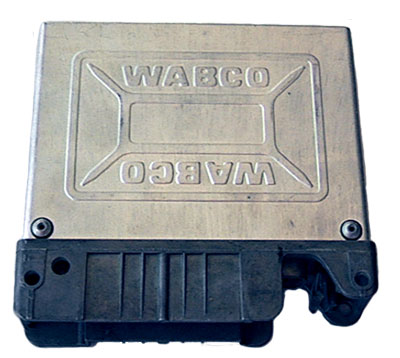 WABCO C TYPE (DISCO I) - System Overview
WABCO C TYPE (DISCO I) - System OverviewIt is only possible to communicate with the ABS ECU when the system is in its idle state, that is with the ignition on and the engine running or not. Once the ECU has detected a signal from all sensors that indicates each one has exceeded 2km/h the ECU turns off the dash lamp and exits diagnostic mode. All ECU resources are then used to monitor the sensors and diagnostic communication is no longer possible until the ignition supply has been disconnected and then re-connected.
Despite sharing a common communication standard which means they all start communicating the same, and share some very basic features, these ECUís are actually laid out very differently in respect of their memory usage meaning codes read from one ECU with the wrong program may give incorrect meaning and other codes may not be shown. Also some of them actually require each memory location used for the fault code storage to be re programmed to 0 individually. This means that using the wrong module on an ECU can alter the ECU and make it non functional, re using the right module after will not correct this. So although the ECUís look identical to that used in other vehicles of the same age and can be plugged in, they are NOT diagnostically interchangeable.
 WABCO C TYPE (DISCO I) - Known Fitments
WABCO C TYPE (DISCO I) - Known Fitments WABCO C TYPE (DISCO I) - Physical Details
WABCO C TYPE (DISCO I) - Physical Details
 WABCO C TYPE (DISCO I) - Pin Outs
WABCO C TYPE (DISCO I) - Pin Outs